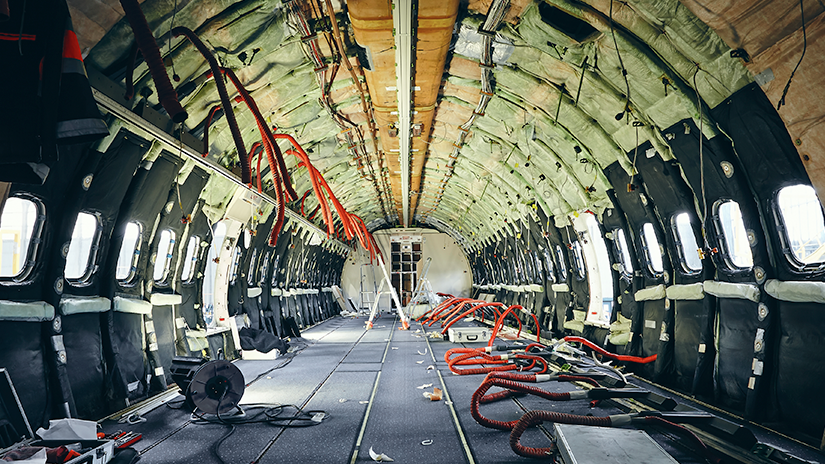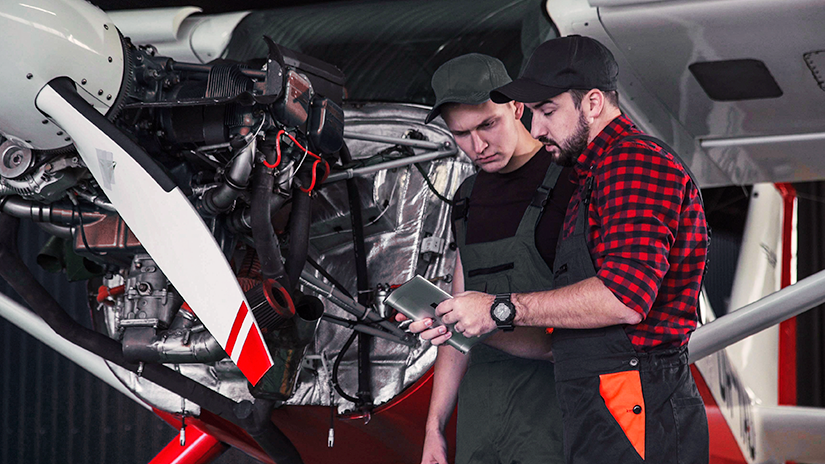By Bill Bigot, Vice President of Business Development, JR Automation;
Sid Verma, General Manager of Manufacturing Practice, Hitachi Vantara;
and
Randy Rounkles, Chief Engineer, JR Automation
Aircraft manufacturing demands the highest-quality materials, highly trained experts, rigorous quality control and precision processes that remain largely manual. These demands make it an ideal candidate for a digital reinvention.
With the expertise of a partner like Hitachi, aircraft manufacturers can combine major leaps in operating technology (OT) with integrated IT for a fully optimized environment. These companies can take advantage of recent advances in automation technology and analytics to improve manufacturing speed and accuracy and reduce waste, making cells more efficient and sustainable.
A single-aisle commercial aircraft contains tens of thousands of nutplates. The manual installation of each nutplate takes three to four minutes. This process is repeated thousands of times over the life of the craft as plates are removed and reinstalled for routine maintenance. Until now, nutplate installation has been done manually, exposing manufacturers to risks including:
To meet today’s demands to become more sustainable and socially accountable, manufacturers must find ways to reduce the waste and inefficiencies inherent in their legacy processes — and the aerospace industry is no exception.

To address these challenges, Lumada Manufacturing Insights from Hitachi Vantara merges huge advances in automation at the operational level with superior insights at the informational level for a comprehensive shift toward smarter aerospace manufacturing.For example, JR Automation’s SmartAttach manufacturing cell fully automates nutplate attachment, taking an error-prone process that took up to four minutes down to 30 seconds. This kind of automation leads to a host of benefits:
The automation built into the SmartAttach cell gives these resource-intensive processes a chance to become not only more cost-efficient for the company but also more sustainable.
Automating nutplate installation has clear benefits, but the SmartAttach cell is only one part of aerospace’s reimagined digital manufacturing ecosystem. The key to modernizing the industry lies in integrating operational automation with existing IT systems through the Internet of Things (IoT) and technologies such as the Lumada Manufacturing Insights suite to generate more actionable business data.

By linking automation data with organizational systems, Lumada Manufacturing Insights contributes to a smarter, more profitable and sustainable environment across production, operations and supply chains in a number of important ways:
The aerospace industry has a tremendous impact on humanity through safe, high-speed travel; essential defenses; and the pursuit of scientific inquiry and its associated innovations. Hitachi’s commitment to powering good means that it’s our responsibility to improve aerospace and increase the positive impact it has on the world. We take that responsibility seriously, and that’s why our solutions don’t stop at automation. Reducing tedious manual process is only the first step. By automating nutplate installation and leveraging the transformative capabilities of Lumada Manufacturing Insights, Hitachi helps aircraft manufacturers dedicate valuable resources to their most important purpose — making all of our lives better.

Vice President of Business Development, JR Automation
William Bigot is Vice President of Business Development for JR Automation. His responsibilities include management of the business and market development activities supporting all aerospace and defense business units.
Prior to joining JR Automation in February 2019, Mr. Bigot was Vice President of Nova-Tech Engineering and Vice President of Sales, Marketing, and Business Development for PaR Systems. Previously, he spent 24 years in technical and managerial positions with MTS Systems Corporation, where he helped the company become a worldwide leader in the integration of physical and virtual simulation product development in aerospace and automotive markets.

GM Manufacturing Practice, Hitachi Vantara
Specializing in the manufacturing/industrial products, automotive/aerospace, oil/gas, metals/mining and insurance industries, Sid Verma brings more than 20 years of strategic problem-solving acumen, advising C-Suite/Boards and managing product & services business in IoT and the industrial sector. He has a proven track record managing multi-$M P&L, leading large global teams, and incubating/exponentially growing digital business organically and via M&A in large industrial and services companies.
Sid leads the IIoT and Manufacturing division P&L for Hitachi group to deliver growth strategies and Digital + Business + Operations + Technology transformations at clients using NextGen IT/OT capabilities.

Chief Engineer, JR Automation
Randall E. Rounkles is the Chief Engineer for Aerospace at JR Automation. His responsibilities include defining and understanding aerospace specifications and requirements to ensure automation meets industry standards. In addition, Randy supports the company’s strategic initiatives in the aerospace sector.
Prior to joining JR Automation in July 2019, Mr. Rounkles spent 33 years in the aerospace industry working for both Boeing and Spirit Aerosystems. After starting as a sheet metal mechanic at Boeing, he moved into automated fastening, progressed into management positions, and finished his career as Senior Operations Leader for the Advanced Manufacturing division.